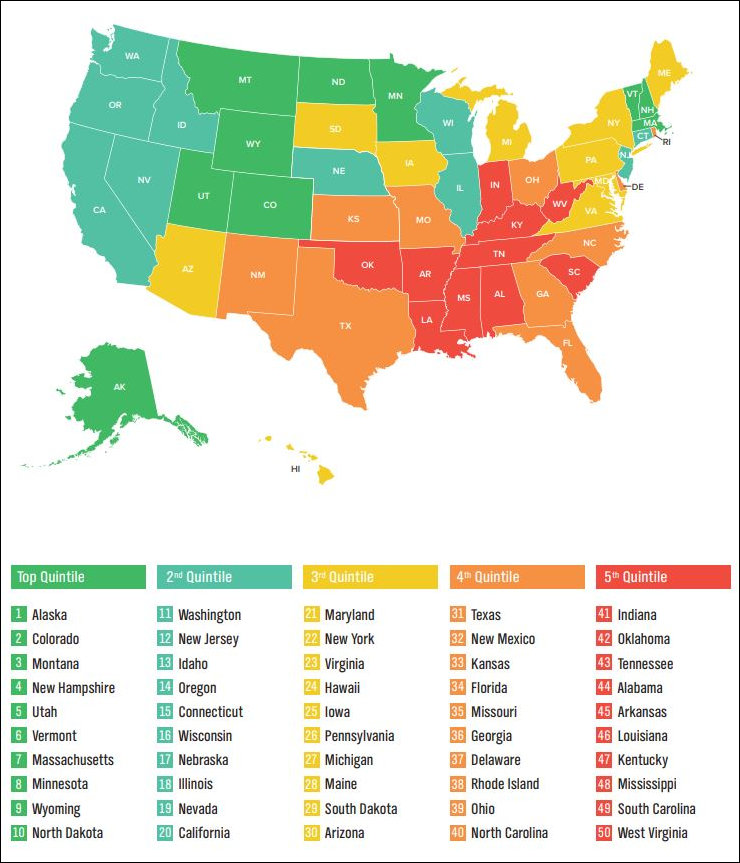
Health may be correlated with income and Virginia may have the ninth-highest average household income among the 50 states, but the Old Dominion ranks 23rd in the nation for the incidence of diabetes, according to a Gallup-Sharecare report based on 2017 data. The incidence of diabetes has increased from 10.6% of the population to 11.1% since 2008-09. Meanwhile, in a parallel development, the incidence of obesity has risen from 25.1% to 27.3%.
Central Appalachia is particularly afflicted with the disease. West Virginia has the highest incidence in the nation, and among metropolitan areas, Kingsport-Bristol is ninth highest. Among Virginia metros, the rates are:
35. Washington — 9.3% incidence of diabetes, 24.6% obesity
75. Lynchburg — 10.8% diabetes, 29.5% obesity
76. Charlottesville — 10.8% diabetes, 21.9% obesity
100. Richmond — 11.7% diabetes, 31.3% obesity
103. Hampton Roads — 11.8% diabetes, 28.3% obesity
126. Roanoke — 12.5% diabetes, 32.1% obesity
185. Kingsport-Bristol — 20.3% diabetes, 34.8% obesity
The survey covers the 186 largest metro areas in the country.
The spreading prevalence of diabetes is distressing news for those afflicted by the disease. And, given the socialization of medical costs by means of government programs and innumerable subsidies and cross-subsidies, it is distressing for all of us who have to pay for it.
Gallup-Sharecare explained the economic costs associated with the disease:
If the diabetes rate had remained at its 2008 level, about 2.3 million fewer U.S. adults would have the disease today, and healthcare costs due to diabetes would be an estimated $19.2 billion less than current costs.
Diabetes not only impacts the U.S. economy through direct costs, but also through lower employee productivity due to unplanned absenteeism. After controlling for all major demographics as well as BMI weight class, over 57 million additional unplanned days of work are missed each year by workers who have diabetes as compared to workers without diabetes. This costs U.S. employers $20.4 billion annually.
Diabetes represents both a problem and an opportunity for Virginia. Medical costs weigh heavily upon the state, creating a major economic burden. Conversely, successfully targeting diabetes could reap an economic boon.
Bacon’s bottom line: I have become acutely attuned to the perils of diabetes since I was diagnosed with pre-diabetes a year ago. My glucose level has not risen to a dangerous level, but it’s been bouncing around in the undesirable zone. Since getting the unwelcome diagnosis, I have made tremendous efforts to take control of the situation. I’ve lost about 12 pounds and kept the weight off. I have altered my habits and routine to get more exercise (not a terribly hard thing to do because I enjoy exercise), and I have cut my carbohydrates (a very hard thing to do because it has meant giving up milk shakes and french fries).
If I can do it, so can others. And if others don’t do it, I get miffed. While there may be a genetic component to the disease, diabetes is largely the result of behavior. Why should I pay more in taxes and health insurance because others don’t make greater efforts to take care of themselves? Our system of health insurance creates a moral hazard — it does not punish poor habits or reward good ones. I don’t know how we, as a society, lick this problem. Treating diabetics like smokers and charging them more for insurance does not seem like a humane solution. But something has got to give.

Leave a Reply
You must be logged in to post a comment.